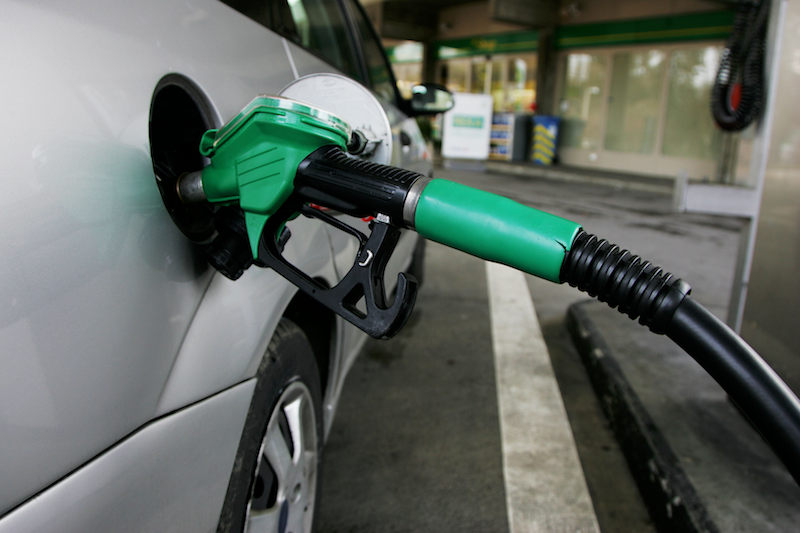This is one saying that may not make any sense at all to drivers (if the term ‘drivers’ even means anything) in 25 years time. ‘Well, that was back when transportation devices needed to be topped up with fuel, son.’ might be the response from the dad of the future.
But since it does still mean something in 2017, as a follow up to one of our previous articles on the cost of owning and running a car, we thought we’d look at what most people see as the major cost component – the cost of the fuel.

Fuel consumption per mile/km has improved significantly over the past 40 odd years – figures out of the US show that average fuel economy (for cars) went from around 13mpg (18 l/100km) in 1975 to 33mpg (7 l/100km) in 2010. The latest available figure for Australia is from 2013 when the passenger vehicle average was around 11 l/100km, perhaps reflecting the greater popularity of gas guzzling four wheel drives down under.
And with the not so new generation of hybrids and pure electric vehicles on the market in Australia or coming soon, the whole concept of fuel consumption is getting a bit more complicated.
There are essentially four different options you have if you’re buying a new car and you’re looking to get one that’s economical with fuel – diesel, petrol, hybrid and pure electric. All have their pros and cons – let’s have a look…
Diesel
Despite the recent ‘fudging’ of the fuel consumption figures by some fancy footwork on the part of VW, diesels are still anything up to 35% more fuel efficient than the equivalent petrol engined car.
They can also run on more environmentally friendly fuels such as bio-diesel, and newer engines do not suffer some of the problems of older diesels eg smoky/smelly exhaust fumes and difficulty starting in the cold.
Servicing costs are generally lower too, as diesel engines require less maintenance that petrol engines. However, the difference in price between diesel and petrol isn’t as great as it used to be, and the fuel efficiency benefits are generally cancelled out if the bulk of driving is short trips or city driving.
Petrol
The good old ICE (internal combustion engine) has improved considerably over the last 10-15 years. One of the leaders in this field is FIAT, that, by introducing new technology (including adding turbochargers) in its smaller 900cc engines has been able to get more power and more efficiency out of these tiny powerplants.
The highest ranking petrol engined car – not including hybrids – on the Green Vehicles Guide is the tiny FIAT 500 0.9 Turbo Twin Air Auto, coming in at 3.9 l/100km, the same as the Toyota Prius Hybrid.
Hybrid
Hybrid cars are those that have both an electric motor and a conventional internal combustion engine to power the car. In most hybrids, it’s the electric motor that powers the car at low speed and the petrol engine that takes over at cruising speed, which is when the petrol engine is operating at peak efficiency.
When the driver wants to accelerate quickly, both power sources are used and when braking or driving at higher speeds, the spinning of the wheels feeds power back into the electric generator. Finally, when the car stops, both engines shut off.
This is how the Toyota Prius and Porsche Panamera hybrids are able to hit 3.4 l/100km and 2.5 l/100km respectively. Hybrid cars are great, the only downside is that you pay a premium for these more technologically advanced cars – the Prius is $35,990 plus on roads and the Panamera (wait for it) is $242,000.
Electric
After a succession of electric only cars that clearly failed to inspire (think the Holden Volt and the Mitsubishi MieV), it looks like Tesla may be the car company to break through for the pure electric car. Unlike these predecessors, all Teslas have a good range – not that different from what you’d get out of a tank of petrol in a ‘normal’ car – and they don’t look like futuristic utility vehicles.
The luxury end Tesla S – at $125,000 – is outselling its similarly priced rivals and the new Tesla 3, the car for the masses, is due out in Australia next year with a moderately affordable price tag of around $45,000.
All electric is a great option if you just need to nip around the local area, however it’s still a bit of a risk for a longer trip unless you know where you’re going to stop and charge. And when you do stop it’s going to take one hour of charging for each 81kms of driving using a regular power outlet or half an hour for 270kms of range at a supercharging station.
You might have to wait a while until Tesla builds a supercharging station near you – currently in Australia there are just 12 of them in total. But they are conveniently located on the drive from Brisbane to Sydney and then on to Canberra and Melbourne.
Just don’t plan a trip across to Perth.
Image credit: https://upload.wikimedia.org/wikipedia/commons/f/f5/Petrol_pump_mp3h0355.jpg




